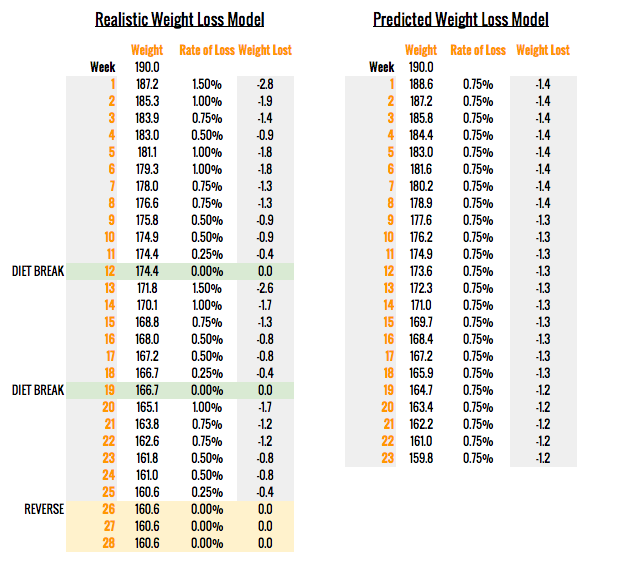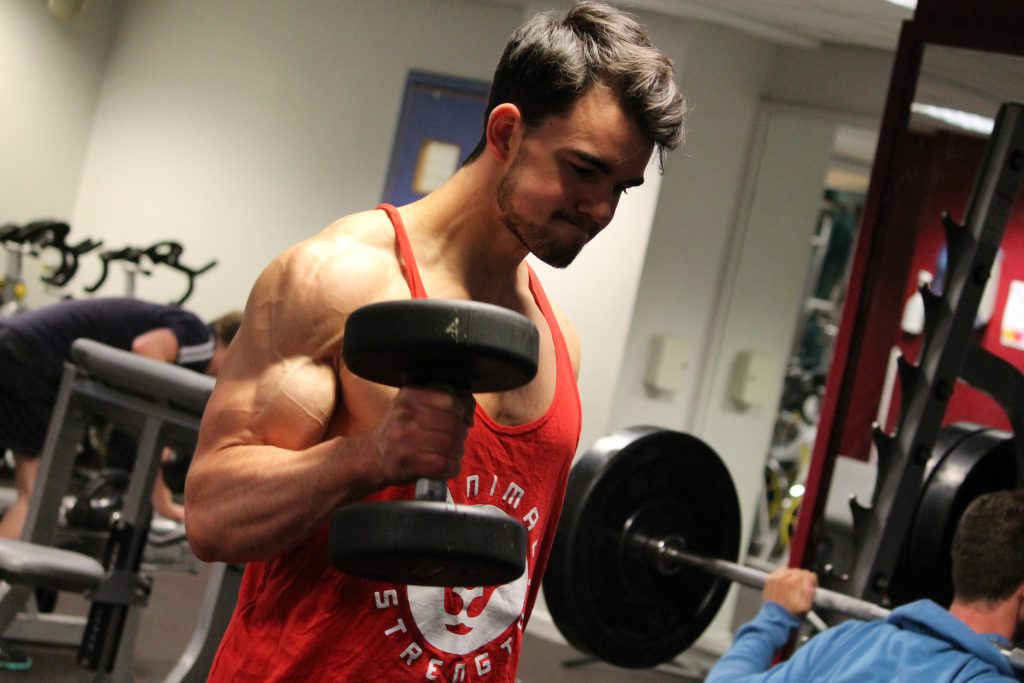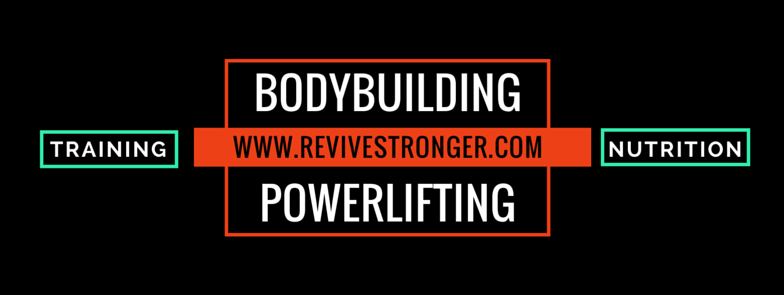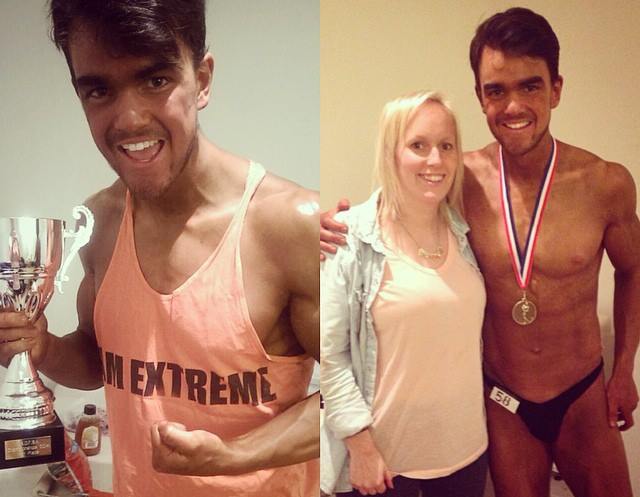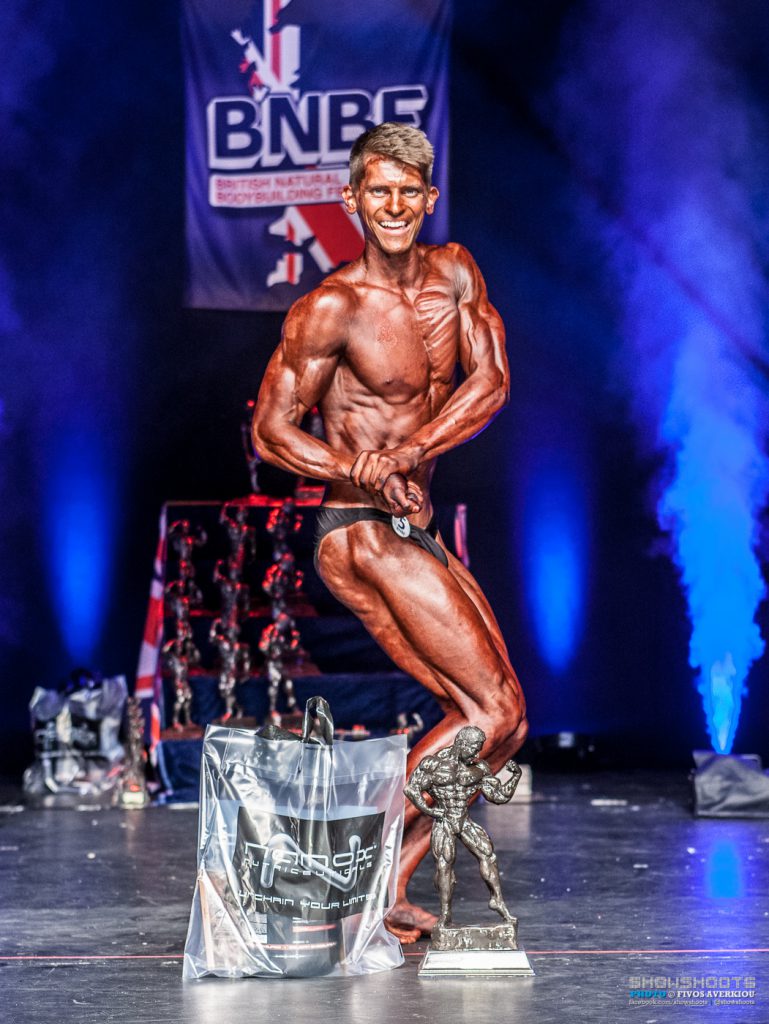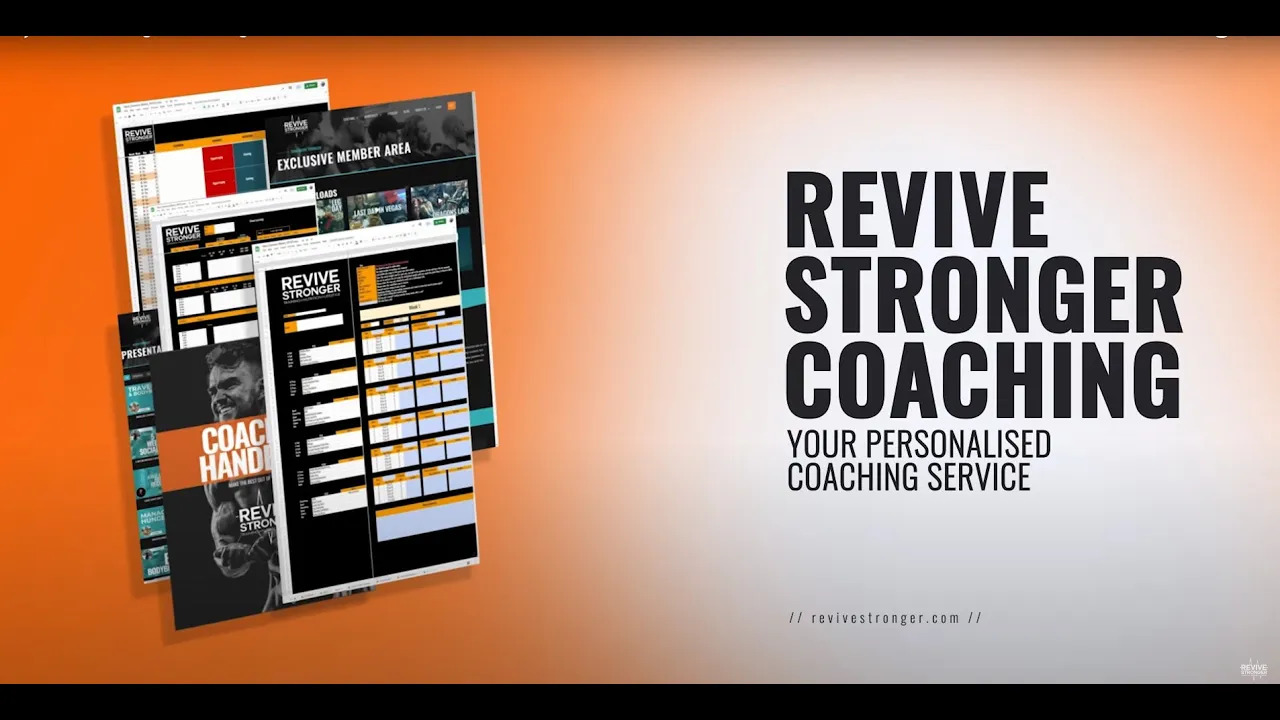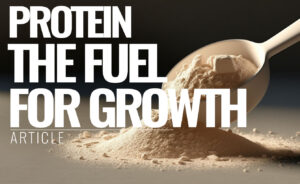
Revive Stronger
6 Steps to a Building a Winning Bodybuilding Contest Prep
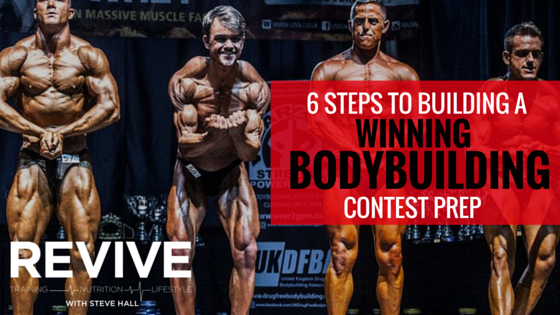
Have you competed but struggled to get the conditioning required to win?
Maybe you’ve started on a contest prep but didn’t get as lean as you liked
…so pulled out?
Possibly you compete year on year, never really seeing the results you want???
Well with the 2016 Bodybuilding season getting underway we want to start thinking about how we’re going to approach our contest prep.
Dieting for long periods of time is VERY HARD.
We want to show off all the muscle we have built over the years in the trenches, eating copious amounts of food and consistently hitting the iron.
So getting our contest prep right is VERY IMPORTANT.
Having competed myself and taken several physique athletes to stage, I know there are some key steps to a successful prep. I competed in 2014 and placed in both the NPA and UKDFBA in the Novice categories, I’m not a pro, and I may never be one, but the steps a pro, you or me would be the same.
In fact some of these steps are taken from professional bodybuilders such as Eric Helms, Layne Norton, Alberto Nunez and the like.
STOP!!! THIS COMES BEFORE YOU EVEN START
There is however one step that far exceeds the importance of any of the following steps, in fact without it you might as well not read on. This step begins in the offseason, when you’re not dieting but actively trying to build muscle mass. — The MOST effective offseason you can have would be to remain lean (not above ~15% males and ~25% females) and build your calories as high as possible.
[bctt tweet=”It starts in the offseason – high calories without high bodyfat”]
What this does is sets you up for success, by maintaining a leaner physique you will need less time dieting and this helps to reduce loss of lean tissue and gives you the best chance possible of getting insane conditioning.
Plus the higher the calories you’re on to begin with the more wiggle room you have to play with down the line; imagine starting a 20 week contest prep on sub 2000 calories for a male or sub 1500 calories for a female — you haven’t got much room for manoeuvre when things stall (and trust me, they will).
Best would be to start on a large calorie intake, with little cardio whilst being relatively lean — it might sound a lot to ask, but don’t come crying to me when you’re 5 weeks out doing cardio everyday, starving and haven’t got visible striations all over (because if you do, I will tell you to opt for a later show). All it takes is managing your calories; creeping them up slowly so you build muscle but not needless fat.
Table of Contents
Step One: Give Yourself More Time
Our first step is one at first looks daunting…more time prepping! Yeah we’re going to give ourselves more time than we think we need, why? Well lets look at what happens when people don’t give themselves sufficient time:
- They chuck in lots of cardio
- They drastically cut calories
- They stress out big time
So now giving ourselves more time seems like a better alternative, we won’t need to chuck in a tonne of cardio, suddenly heavily drop our calories and with that we will avoid a tonne of stress. Also those three steps often don’t even have the intended outcome for the person, they hope it’ll increase their rate of fat loss, when in reality it causes them to hold weight (likely down to high levels of cortisol – you can read more about cortisol and water weight here).
[bctt tweet=”It doesn’t matter how high your protein intake is, crash dieting will rob your muscle”]
More time is better, but how much more? We don’t want to spend the entire year dieting for a show do we? Well we can gauge how long we want to prep for by following some simple steps;
- Workout our competition weight – this can be done by looking at our history, times we have been lean and or previous competitions. This will give us an idea of what weight we’ll have to come down to. A lot of competitors have their ‘competition’ weight and this may slowly creep up season to season, but not drastically. If you haven’t competed before then look at times you have been your leanest and take that down another 5 to 10% e.g. you had abs and saw a few striations at 170lbs, take this down 5% and your aim would be 162lbs.
- Workout our rate of loss – we want to preserve as much muscle as possible, so we cannot go dropping a tonne of weight fast. A reasonable rate to lose is 0.5% to 1% [1][2] (max 1.5% [3]) of your total bodyweight per week, nearing 1% at the start and dropping to 0.5% as you near your show.
- Workout time required – so we have our current weight and our estimated show day weight, we can then look at how long it would take if we lost at the rate of loss we worked out above. Using the example above, we’re 190lbs and we’ve been very lean at 170lbs, so we estimate our show weight to be around 160lbs — thus we have 30lbs to lose. Below I have drawn out a predicted timeline and a realistic timeline, we want to go with being realistic:
We have dieted before, so to think that weight loss is going to be perfectly linear is not realistic, there will be weeks when our weight loss stalls and slows, we will have to manipulate and adjust (more on that below). This is because our maintenance is dynamic and moves as we diet it will inevitably go down.
[bctt tweet=”Giving yourself more time is a no brainer”]
You will see the realistic model is 5 weeks longer, this is due to implementing diet breaks (which I will come onto) and also allowing for a reverse into the show (again I will touch on this)– you may have heard this referred to as ‘Diet Periodisation’. Those 5 weeks in the big scheme of things is not a lot, but it could mean the difference between first and second place.
Step 2: Know Your Numbers
It is important when dieting to know our numbers, but even more important when in competition prep. By numbers I mean not only your nutrition; calories and macros, but also your training; reps, sets, weights and your body weight.
There is a saying that is perfect in this situation:
[bctt tweet=”You can’t manage what you don’t measure”]
Thus how can we change our training to suit our needs if we don’t monitor it? We can’t expect to keep losing weight if we don’t consistently weigh ourselves, plus even if we do weigh ourselves if we do not know our calorie intake how can we adjust things going forward? We can’t.
So we need to make sure we are measuring:
- Our body-weight (ideally daily and taking a weekly average)
- Our training performance (is it decreasing?)
- Our nutrition (calories, but also carbs, fat, protein and fibre)
These all need to be measured in a consistent manner, otherwise it is, well pointless. If we only track our calories today and not tomorrow then we don’t accurately know our average intake over the long-term, sure we might have only had 2000 calories the day we tracked, but the others?
Who knows?
Not us, and so we cannot make appropriate changes.
[bctt tweet=”Use averages & scales”]
Plus when we’re in contest prep it becomes more important to get your macros set up for success, do you perform better on 30% of your intake from fats or do you do better with a higher carb intake? I even went down to look at what different foods did to my physique, I noted that when I had a bowl of pro-oats I would get really vascular and pumped — this helped me when planning my peak week. There is a lot of inter-individual variability when it comes to this stuff [4] [5], and if we’re not tracking it we can’t manage it.
In the video below you can see me 1 day out from my first show, in which I talk about my weigh in and how it compares to my weekly average, and then you get to see my breakfast in which all the nutritional information is tracked on myfitnesspal:
In the same way if we weigh ourselves in the morning and other times after dinner and — ‘woah’ we had that one crazy weigh in at the gym, we have no consistency and thus the data we’re collecting is useless. Weigh yourself, at home, unclothed, before consuming anything, after the loo, in the same place, on the same scale — it sounds like a lot, but once it becomes habit it will be easy and you will be in a much better place to adjust from.
[bctt tweet=”Without consistency any data we collect is useless”]
When it comes to the weight room it is important to monitor our weights, reps and sets — without this we don’t know if we’re doing better or worse. If you know your reps are going up with the same load then you can feel pretty good about how things are going, and likewise if you notice they’re going down, you may need to adjust something. Of course when we’re on low calories we can expect our performance to be somewhat lower, but we can strive to keep as much as possible, and by monitoring things we can adjust where necessary to keep it.
And by keeping our performance up we are much more likely to keep our muscle.
So I’d actually say:
[bctt tweet=”You can’t manage what you don’t measure consistently”]
Step 3: Don’t Overhaul Your Training
So our goal has changed from one of building muscle to dropping fat and maintaining muscle, so we need to drastically change our training; loads of cardio, higher rep work and supersets etc? That would be a bad idea.
When it comes to maintaining muscle we want to train FOR MUSCLE, that means we actually don’t need to change the way we lift in the gym all that much. We want to focus on maintaining performance in the 6 to 12 rep range and progressing where we can, sounds a lot like typical muscle-building training right? For more information be sure to check out my article here for a more in-depth look.
[bctt tweet=”When dieting; train for muscle to secure muscle”]
As we are now monitoring our numbers closely we will see if our performance is dropping, and rather than completely changing things like dropping loads or changing to a different programme, there is something much more effective and simple we can implement. All we need do is drop a set, that’s it, if you notice you can’t maintain performance for your 6 sets of 6 to 8, then drop to 5 sets, keep the load the same. To quote Lyle McDonald an expert in fat loss:
“The basic conclusion, again from both research and practical experience is that both volume and frequency of training can usually be cut by up to 2/3rds (that is, to 1/3rd of what you did to improve it) but with one massively important caveat: the intensity of that training must be maintained.”
So using this line of thought your 6 sets could drop all the way down to just 2 sets, key is keeping the intensity there. However, as per the initial recommendation, do go from doing 6 sets to 2 sets, slowly bring down the sets as required — do not pre-empt performance decreases, always aim to improve.
Remember when we’re dieting we’re in a catabolic state, weight training works against this, plus the more we train, the more calories we burn, the more fat we can lose. So in addition to anti-catabolic stimuli, the highest volume possible on a cut also helps to burn the most fat possible.
Likewise with cardio, we do not want to go from none to doing 2 high intensity sessions and 1 hour of treadmill walking. In my opinion cardio is just a tool to be used to enable us to eat more, so if we’re able to eat plenty while losing fat, great. — However, I would like to point out that I do like some cardio to be maintained in a bodybuilders off-season, just a small amount of low intensity cardio is enough to maintain a lot of the benefits it brings (improved work capacity, nutrient partitioning, keep fat metabolic pathways active).
Just like we changed very little with our weight training the same goes for our cardiovascular work, only add it in as and when necessary. My preferred approach is when someone is stalling with their weight loss I use a combination of adding a small amount of cardio coupled with a small drop in calories, to make the impact on the person as small as possible. So rather than drop calories by 500, or add in an hour of cardio, I would opt to drop calories by say 250 and add in 30 minutes of cardio — a blended approach.
Step 4: Build a Strong Support Network
The saying ‘you are the average of the five people you spend most your time with’ could never be more true when it comes to trying to get shredded. We need to build a strong support network, of people who understand what we’re doing, who aren’t going to try to sabotage us, but instead they will try to lift us up when we’re down.
[bctt tweet=”you are the average of the five people you spend most your time with”]
My closest friends and family helped me more than they could ever know during my contest prep, simple things like keeping you company as you bust out some low intensity cardio. Or when you’re in the gym and struggling to get through your workout, a simple text from someone supporting you can be that drive you need to get sh*t done.
To quote my online client Rob Graham who competed last year and won the BNBF novice category, we would have weekly video updates, which became twice weekly and also spoke several times over skype during the lead up to his contest:
“You were always super responsive to e-mails, texts and facebook. The Facebook group (private team member group) is also awesome because you have that support network around you to help you when you are at a low point and also to share your success with.
The main thing though is just the fact that you have someone to share the journey with because, believe me when you have been dieting for 25 weeks your girlfriend, friends and family will get a little bored of you complaining. The fact is that you are doing this yourself, no-one is making you get up at half 5 to do your cardio or going to make you hit legs for the second time in a week even though your stiff as an ironing board.
Having you there gave me someone who had done it before, and knew exactly what I was going through. I could always ask random questions (we probably shared too many conversations regarding body hair and protein bars) that I would have never thought of like where to buy my posing trunks from, what tan to use, when to exfoliate… Little things that add up to make all the difference.
You also taught me to focus on the process; take each day as it comes and accept that you will have shitty days towards the end and you just need to keep digging because the ends justify the means, especially when you win!! It was an amazing feeling and although I can’t do the BNBF British Finals, it has been an experience that has taught me so much, both about fitness and myself as a person.”
It has never been so easy to develop a strong support network, we have the internet which allows us to connect with thousands of like-minded people. Personally I used my social media channels to help keep me accountable and I also received a lot of support from my followers which was greatly appreciated. Some ideas:
- Tell your friends and family what you’re doing and that you’d love their support.
- Tell people in your gym, then every-time you enter people will be checking on your progress.
- Start a YouTube channel, Instagram account or Blog, log your progress and interact with others.
- Join relevant Facebook groups (such as mine: Powerliftng & Bodybuilding Chat with Revive).
- Get a coach you trust and can relate with.
Without my girlfriend I wouldn’t have been able to get to the platform, she took a lot on her shoulders during my prep and I cannot thank here enough.
So make sure to surround yourself with people who will support you, understand what you are doing and why. There will be some very tough times…
..times you will want to give up
…you will question your reasons behind what you are doing.
By having a strong support network you not only have people to keep you accountable, but you have their will and motivation at your disposal. They want you to fail as much as you want yourself to fail, use their energy to keep you on track.
Step 5: Take a Break
Yup you read right, we are going to take a break. This is something we could easily overlook, we have our eyes on the prize and want to get lean asap. However, by taking a break we will actually; get more shredded, retain more muscle and enjoy the process a lot more.
As you saw above in step 1 we are going to take more time than we think we need, and in that realistic timeline we had some diet breaks and refeeds — these are how we’re going to take a break and see better results. Without going into too much detail a refeed is a period of time in which you eat at maintenance calories, normally fat and protein are kept as is and the increase in calories comes from carbs.
For example: You eat around 2250 calories made up of 200g protein, 250g carbs and 50g fat, this puts you in a deficit, then on your refeed day(s) you consume 2800 calories with the same protein and fat but 135g of extra carbs.
A refeed can be anywhere from one day to several days, and it will depend on the person, a diet break is very similar but is a week or more in length. No these are not cheat meals or excuses to binge, they are calculated and will be appropriate to our situation.
[bctt tweet=”Take diet breaks and see better results”]
Why take a break?
Why can we not just keep dieting?
Well as we diet a few things happen; we’re eating less so Thermic Effect of Food (TEF) goes down, we weigh less so our Basal Metabolic Rate (BMR) goes down, we have less energy so our Non Exercise Activity Thermogensis (NEAT) and Non Exercise Physical Activity (NEPA) go down, we’re constantly cold as our body is conserving energy and thus we you burn fewer calories.
In addition to that our hormones fight fat loss; ghrelin goes up, leptin goes down and so we’re always hungry. Cortisol spikes as does Catecholamines and Serotonin plummets so we’re constantly stressed. Plus testosterone comes down as does T3 and T4 Thyroid hormones which leads to less energy expenditure.
Losing fat isn’t meant to be fun though right?
But what if we could do something that could help reverse or even prevent some of the above from happening? We’d want to do that right? That is where taking a break comes in, and you can learn more about diet breaks and refeeds here. By increasing the amount we eat, periodically allowing our body to stabilise, we reduce the negatives that come with dieting.
This allows us to then keep losing fat, stay healthier and eventually get into the condition we want.
Furthermore, these periods of higher carb intake allow us to examine their impact and act as a testing ground for our peak week which will come nearer toward our show. We can vary the foods we eat during these times, see which foods make us look better or worse, also taking note to whether we look better the day after or a couple of days after our refeed. These experiments will become invaluable when it comes time to peak our physique.
[bctt tweet=”Experiment with foods in your contest prep”]
For example with Rob we noticed he could take in a lot of carbs, more than either of us expected, and his weight would keep coming down, we also noted that he looked best the day after his refeed, and then ham sandwiches and sweets made him look really full, so we used this information when it came to planning his peak week.
Ideally you would shoot for a faster rate of weight loss at the start as you’ll be more resistant to muscle loss and metabolic adaption, then when things start slowing you take a diet break. After this you could then opt for a slower rate of loss as you’re leaner and on fewer calories so you’re at greater risk of muscle loss and metabolic adaption.
You may then need another diet break or not, it would depend on the person and then finally you’d hope to be ready early so you could eat up into the competition to gain back lean body mass and overall improve your appearance further.
A 24 week prep might look like:
- Weeks 1 to 11 – average rate of loss 1%
- Diet break 1 week (eat at maintenance)
- Weeks 13 to 20 – average rate of loss 0.75%
- Weeks 21 to 24 – eat up into the show (slowly increasing calories)
This would be the ideal position to be in, eating into the show, and this is exactly what me and Rob did for his competition. Three weeks out we slowly took Rob from having 1900 to 2000 calories and 1500 calories worth of cardio to 2100 to 2200 calories and 800 calories worth of cardio, before then peaking.
Come show day Rob presented his best package and took the gold — a winning formula.
Step 6: One Week to Not Screw Up
The final step to building a winning bodybuilding contest prep is to not screw up our final week. One week could ruin a fantastic physique, but it cannot make an awful physique fantastic. The week I am referring to is peak week, the final week before the competition, the week most competitors place too much value on.
[bctt tweet=”Peak week = One week not to screw up”]
Isn’t peak week about ‘peaking’ your look…
Much like you would plan your training to peak your strength in powerlifting…
So why would I say it’s a week to not screw up?
The thing is there is a lot of bad information out on the internet, recommending extreme approaches to peak weeks, that could do more harm than good. Often these are not founded in science and are based on enhanced athletes, in reality a natural competitor won’t be able to take their physique from 85% to 100% in a week, maybe they can take it from 90% to 95% but they certainly can take it from 90% to 60% — hence why I am adamant we should aim not to screw it up.
The people who win shows, or get their peak right have some things in common:
- They’re following progressive resistance programmes.
- They have their diet set up to maximise muscle retention.
- They have given themselves more than enough time to get lean — oh and therefore they’re shredded beyond belief.
If we follow the steps prior to this one, we will be one of those people.
Too many miss the forest for the tress, they get stuck looking at minutia like how much sodium to consume during peak week, when they should focus on getting the big rocks (the steps above) set up so they are lean enough in the first place. Learn more about peaking here.
6 Steps to Building a Winning Bodybuilding Contest Prep
STEP 1: Give Yourself More Time
STEP 2: Know Your Numbers
STEP 3: Don’t Overhaul Your Training
STEP 4: Build a Strong Support Network
STEP 5: Take Breaks
STEP 6: One Week to Not Screw Up
WHAT NEXT?
Do you need any help with the above? Do you have any questions you need answering? Are you looking to do a bodybuilding show and need help planning out the details?
Join my free facebook group or add me on snapchat (revivestronger) and ask your question there, I will respond asap.
If you want to learn more about training for fat loss I recommend you read this: Weight Training for Fat Loss.
One more thing…
Do you have a friend who is looking to start their journey to the stage or wants some help planning their bodybuilding season? Share this article with them and let me know what they think.
[bctt tweet=”6 Steps to Building a Winning Bodybuilding Contest Prep”]
References:
- Garthe I, Raastad T, Refsnes PE, Koivisto A, Sundgot-Borgen J. Effect of two different weight-loss rates on body composition and strength and power-related performance in elite athletes. Int J Sport Nutr Exerc Metab. 2011 Apr;21(2):97-104.
- Mero A, Huovinen H, Matintupa O, Hulmi J, Puurtinen R, Hohtari H, et al. Moderate energy restriction with high protein diet results in healthier outcome in women. Journal of the International Society of Sports Nutrition. 2010 1/25/2010;7(1):4.
- Turocy PS, DePalma BF, Horswill CA, Laquale KM, Martin TJ, Perry AC, et al. National Athletic Trainers’ Association Position Statement: Safe Weight Loss and Maintenance Practices in Sport and Exercise. J Athl Train. 2011;46(3):322-36.
-
Goedecke JH, Gibson ASC, Grobler L, Collins M, Noakes TD, Lambert EV. Determinants of the variability in respiratory exchange ratio at rest and during exercise in trained athletes. American Journal of Physiology – Endocrinology And Metabolism. 2000 December 1, 2000;279(6):E1325-E34.
-
Cornier, M.A., et al., Insulin sensitivity determines the effectiveness of dietary macronutrient composition on weight loss in obese women. Obesity Research, 2005. 13(4): p. 703-9.
We are a personal coaching service that helps you achieve your goals. We want you to become the best version of yourself.



